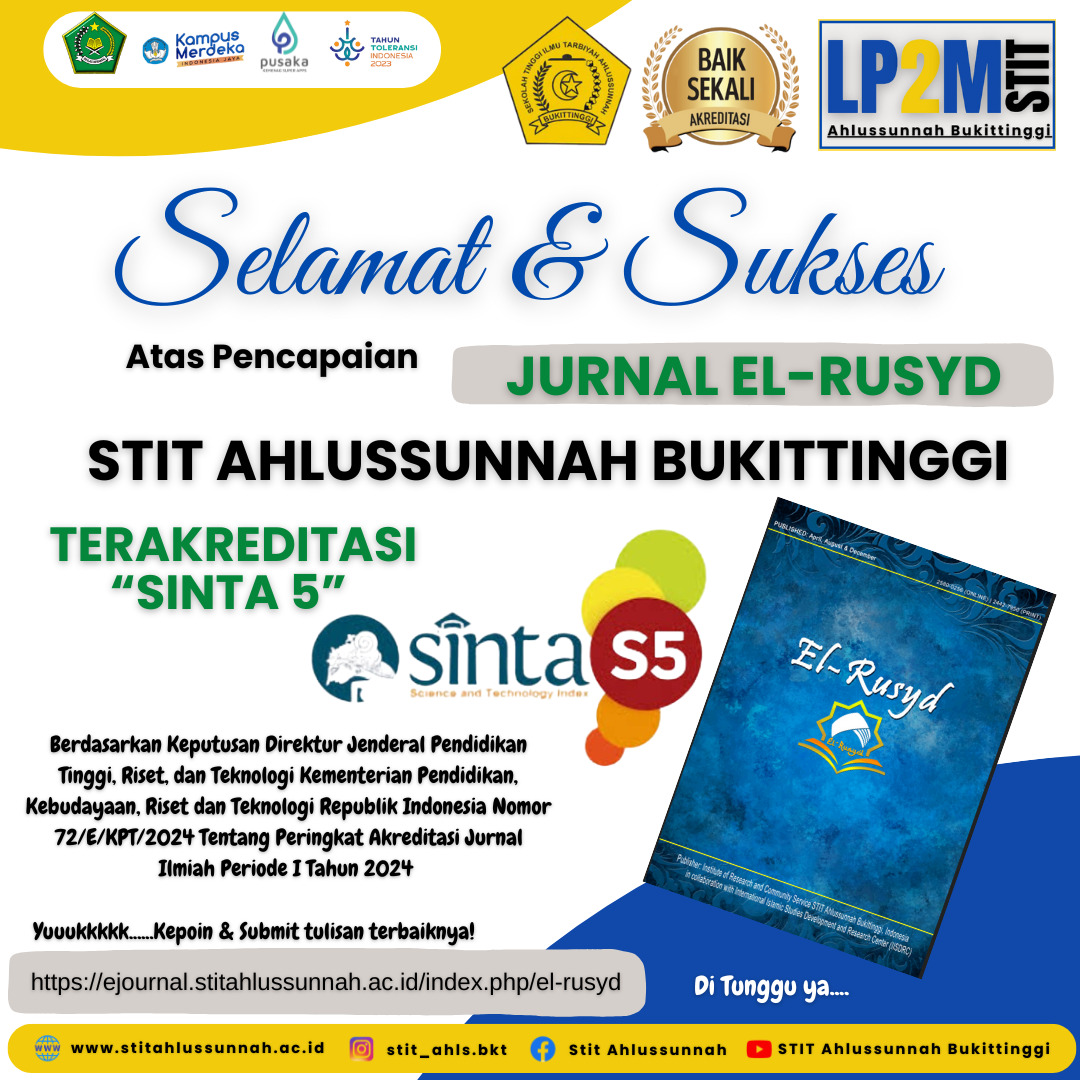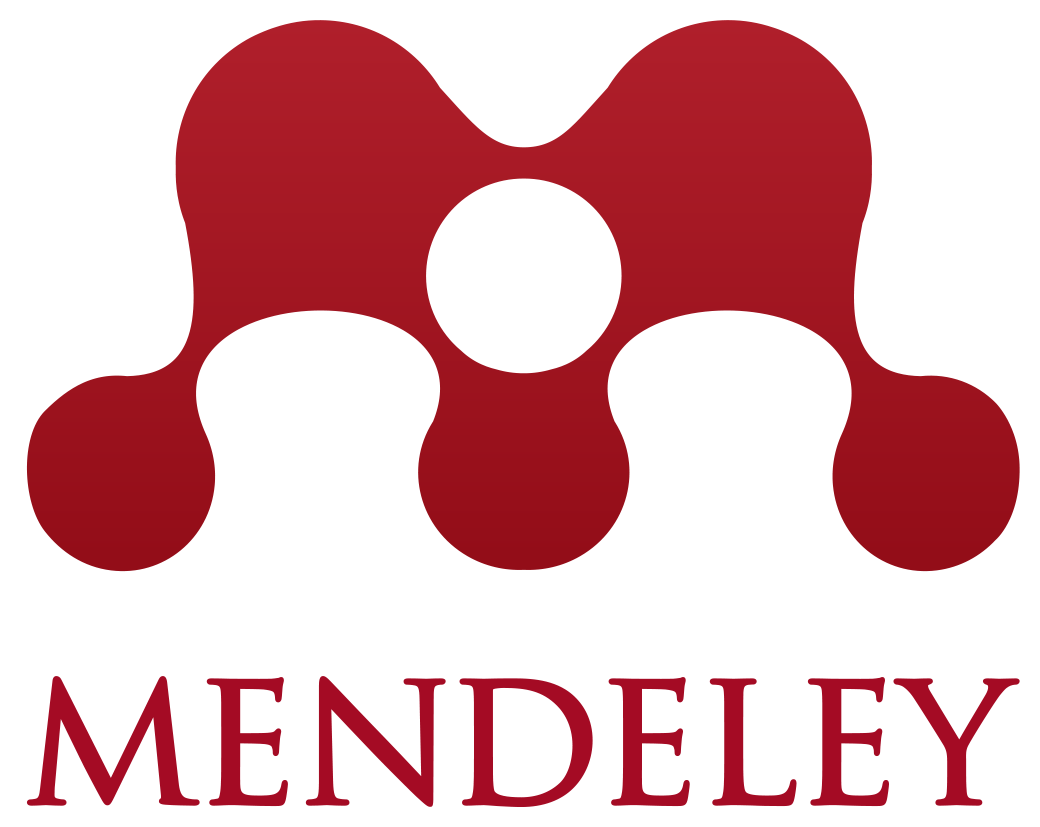The Practice of Pawning Rice Fields in Palembayan: Social Impacts and an Islamic Legal Perspective
DOI:
https://doi.org/10.58485/elrusyd.v10i1.331Keywords:
Pang pawn, social impact, religious figures, community figures, Islamic lawAbstract
The implementation of pawning in the Minangkabau traditional tradition is a loan agreement by providing collateral to the borrower, as long as the debt has not been paid, the collateral will remain in the hands of the borrower and the benefits will also be taken, before Islam came, this pawning tradition had been carried out from generation to generation and became a custom for the indigenous people of Minangkabau.This study aims to describe the practice of pawning rice fields, to explain social relations, and to clarify the legal status of pawning rice fields in Palembayan District. The research method used in this study is a qualitative method. In qualitative research, the researcher is involved in the situation andsetting the phenomenon being studied. Researchers will always focus their attention on the reality or events in the context being studied. This research aims to explain the practice ofpawning, social impact and Islamic law review. This research employed a descriptive method with an analytical approach, analyzed qualitatively. Data were collected through fieldwork, interviews with community and religious leaders, and literature review. The analysis revealed that the practice of pawning rice fields among the Palembayan community does not comply with Islamic law. These findings can serve as baseline data for future researchers examining the problem in different contexts and on different issues.
References
A.A.Navis, 1984.AlamTakambang Jadi Guru. Jakarta: Grafit Press
Adel, S., Athari, Z., Febriani, A., Oktavia, G. ., & Burhanudin, B. (2025). The Qur’an as a Source of Solutions for the Global Moral Crisis. Journal of Quranic Teaching and Learning, 1(2), 18-33. https://joqer.intischolar.id/index.php/joqer/article/view/10
Albi Anggito, dan Johan Setiawan.2018. Metode Penelitian Kualitatif .Suka Bumi:CV Jejak
Al-Bukhari,1997.Shahih Bukhari.Beirut:al:Maktabah Ashriyah
Ariyadi, Norwili,dan Syaikhu. 2020.Fikih Muamalah:Memahami Konsep dan Dialektika Kontemporer.Yogyakarta: K-Media
Ariyadi, Norwili,dan Syaikhu.FikihMuamalah:MemahamiKonsepdan Dialektika Kontemporer, (Yogyakarta: K-Media, 2020)
Aryanti, Y., Mutathahirin, M., Rahman, I., & Mulyani, R. (2022). Teacher Analysis Study According to Imam Al Ghazali in the Book of Al Adab Fi Al-Din. Ahlussunnah: Journal of Islamic Education, 1(2), 46-58. https://doi.org/10.58485/jie.v1i2.177
Benny Oktavian, Melinda Noer, & Jafrinur, 2020.Analisis Bentuk Komunikasi Pada Pagang Gadai
Calvin Alief Junitama,Elvira Dwi Rahmawati,Murtila Karina. 2022. Rahn (gadai) dalam Perspektif
Dasrizal, D., Rambe, K. F., Sihombing, C. D., Khalid, E., & Safitri, D. A. (2025). Distortion of Quranic Interpretation on Socialmedia: An Analysis of the Spread of Misleading Meanings. Journal of Quranic Teaching and Learning, 1(2), 65-82. https://joqer.intischolar.id/index.php/joqer/article/view/8
Efendi, E., Ramadhani, R., Kamil, R. A., & Rahman, I. (2022). The Effect Of Building The Islamic Character Of Students At Wisma Padang State University. Jurnal Kepemimpinan dan Pengurusan Sekolah, 7(3), 271-280. https://doi.org/10.34125/jkps.v7i3
Engkizar, E., Jaafar, A., Alias, M. F. B., Guspita, R., & Albizar, A. (2025). Utilisation of Artificial Intelligence in Quranic Learning: Innovation or Threat?. Journal of Quranic Teaching and Learning, 1(2), 1-17. https://joqer.intischolar.id/index.php/joqer/article/view/7
Engkizar, E., Jaafar, A., Masuwd, M. A., Rahman, I., Datres, D., Taufan, M., Akmal, F., Dasrizal, D., Oktavia, G., Yusrial, Y., & Febriani, A. (2025). Challenges and Steps in Living Quran and Hadith Research: An Introduction. International Journal of Multidisciplinary Research of Higher Education (IJMURHICA), 8(3), 426–435. https://doi.org/10.24036/ijmurhica.v8i3.396
Engkizar, E., Jaafar, A., Sarianto, D., Ayad, N., Rahman, A., Febriani, A., ... & Rahman, I. (2024). Analysis of Quran Education Problems in Majority Muslim Countries. International Journal of Islamic Studies Higher Education, 3(1), 65-80. https://doi.org/10.24036/insight.v3i1.209
Engkizar, E., Jaafar, A., Taufan, M., Rahman, I., Oktavia, G., & Guspita, R. (2023). Quran Teacher: Future Profession or Devotion to the Ummah?. International Journal of Multidisciplinary Research of Higher Education (IJMURHICA), 6(4), 196-210. https://doi.org/10.24036/ijmurhica.v6i4.321
Engkizar, E., Muslim, H., Mulyadi, I., & Putra, Y. A. (2025). Ten Criteria for an Ideal Teacher to Memorize the Quran. Journal of Theory and Research Memorization Quran, 1(1), 26-39. https://joesmiq.intischolar.id/index.php/joesmiq/article/view/54
Fikih Muamalah,KHES dan Hukum Perdata Volume 12( 01), 43-44
Hasneni, 2015 .Tradisi Lokal Pagang Gadai Masyarakat Minangkabau dalam Perspektif Hukum
Ibn Abidin, tt.Rad al-Mukhtar ‘ala al-Dar al-Mukhtar.Beirut: Dar al- Fikr, t.t), Vol.5
Idrus Hakimi DT. Rajo Penghulu, 2004.Pokok – Pokok Pengetahuan Adat Alam Minang Kabau, Jakarta: Remaja Rosda Karya
Imam Ghazali Masykur,Lc,dkk,2013. Al-Qur’an Al-Aziz.Bekasi:Cipta Bagus Segara
Islam,Journal of Islamic&Social Studies,Vol.1(1),75
Khabib Basori,2007. Muamalat .Yogyakarta: Pustaka Insan Mandiri
Khatib al-Syarbaini, 1978.Mughni al-Muhtaj. Beirut: Dar al-Fikr
Lina Nur Oktavia, Wendra Yunaldi, Jasman Nazar.2024.Praktik Pagang Gadai di Nagari Bukik Batabuah di Tinjau dari Hukum Islam dan Hukum Adat.Yustisi Jurnal Hukum dan Hukum Islam 11(1)339,342
Mahkamah Agung RI, Direktorat Peradilan Agama RI,2011.Kompilasi Hukum Ekonomi Syari’ah.Perpustakaan Mahkamah agung RI
Mochtar Naim.1968.Menggali Hukum Tanah dan Hukum Waris Minangkabau.Padang:Center for Minangkabau Studies Press
Prof. Dr. Masyfuk Zuhdi, 1990. Masail Fiqhiyah, Jakarta, PT. Midas Surya Grafindo
Rahman, I., Iskandar, M. Y., Kustati, M., & Sepriyanti, N. (2024). Sustainable Development: Implementation of The Talqin Method In Memorizing The Quran. Jurnal Kepemimpinan dan Pengurusan Sekolah, 9(1), 99-108. https://doi.org/10.34125/jkps.v9i1.355
Rahman, I., Kaema, M. T., Nurhapipah, N., Nelwati, S., Sabri, A., & Rahmanda, R. (2024). Systematic Literature Review: Analysis of Project-based Learning Models from Elementary to High School. Al-Ashri: Ilmu-Ilmu Keislaman, 9(2), 53-66. https://ojs.stai-bls.ac.id/index.php/Al-Ashri/article/view/119
Rahman, I., Wati, W., Putri, N., Wulandari, R., & Habibi, U. A. (2025). Commercialization of Quranic Tahfidz Houses in Indonesia: Da’wah or Business?. Journal of Quranic Teaching and Learning, 1(2), 34-48. https://joqer.intischolar.id/index.php/joqer/article/view/6
Rasdiany, A. N., Akmal, F., Pasaleron, R., Dafrizal, D., Ningsih, R., & Rahman, I. (2024). Systematic Literature Review: The Impact of Social Competence on Teacher Communication Intelligence. Jurnal Kepemimpinan dan Pengurusan Sekolah, 9(2), 239-251. https://doi.org/10.34125/jkps.v9i2
Sawah Di Kabupaten Tanah Datar (Studi Kasus Nagari Jaho Kecamatan X Koto). Jurnal Niara, Vol. 13(2), 531
Sayyid Sabiq, 1998.Fiqh Sunnah,.Jakarta: Pustaka Percetakan Offset
Sri Sudiarti, (2018),Fiqh Muamalah Kontemporer.Medan:FEBI UIN-SU Press
Sulaiman Rasjid, 2020.Fiqh Islam.Bandung.Sinar Baru Algensindo, Cet,91
Syukri Iska, Hasse Jubba, 2022.Epicandra Epicandra, and Mirna Yusuf, The construction of an Islamic capitalism through Pagang Gadaia mongst the Minang kabau people, Journal Sociology Research,Vol,9(1) 4











